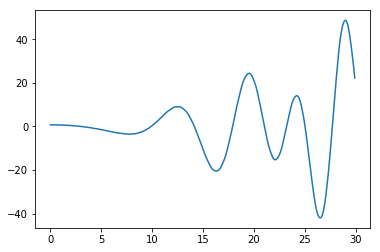I made another one that works a bit better. The real part seems to always cross the x-axis at a zero(See picture). So the zeros of the real part can easily befound by bisection. Then just check if the imaginary part is 0 aswell :) I got 14.141171601414683 and
21.025945073366167 as the first 2 zeros.

import matplotlib.pyplot as plt
def realf(y):
s=complex(0.5,y)
sum=0
for i in range(1,10000):
sum=sum+(i/((i+1)**s))-((i-s)/(i**s))
return sum.real
def imagf(y):
s=complex(0.5,y)
sum=0
for i in range(1,10000):
sum=sum+(i/((i+1)**s))-((i-s)/(i**s))
return sum.imag
x=[y/10 for y in range(0, 300)]
y=[realf(y/10) for y in range(0, 300)]
plt.plot(x, y)
candi=[] #Find points with alternating sign
for x in range(0,len(y)-1):
if(y[x]*y[x+1]<0):
candi.append([x/10,(x+1)/10])
for x in candi:
if(realf(x[0])<0):
sign=-1
else:
sign=1
x1=x[0]
x2=x[1]
tol=1
while tol>1e-8:
temp=realf((x1+x2)/2)
tol=abs(temp)
if(sign*temp>0):
x1=(x1+x2)/2
else:
x2=(x1+x2)/2
if(imagf(x1)<1e-3):
print(x1)